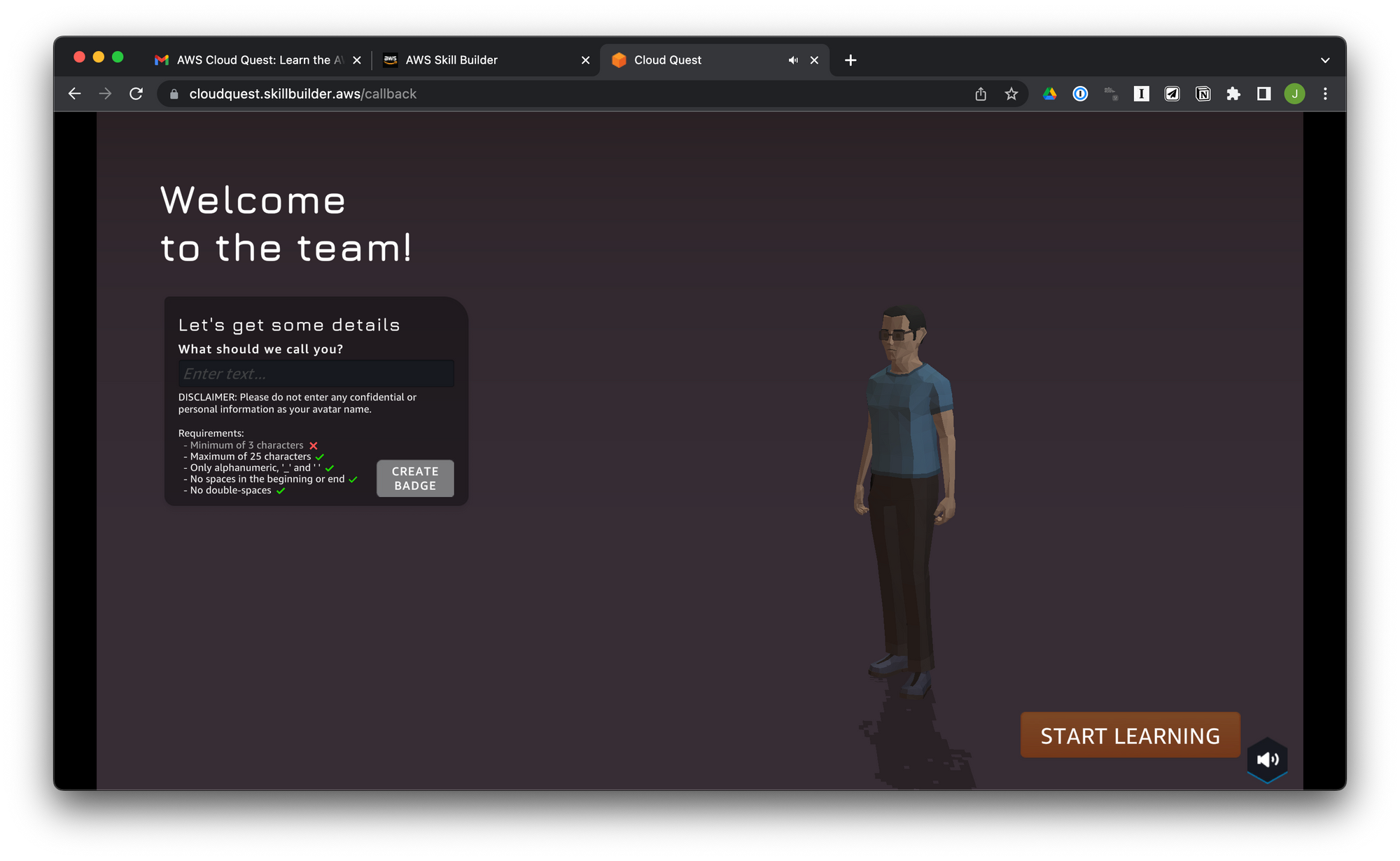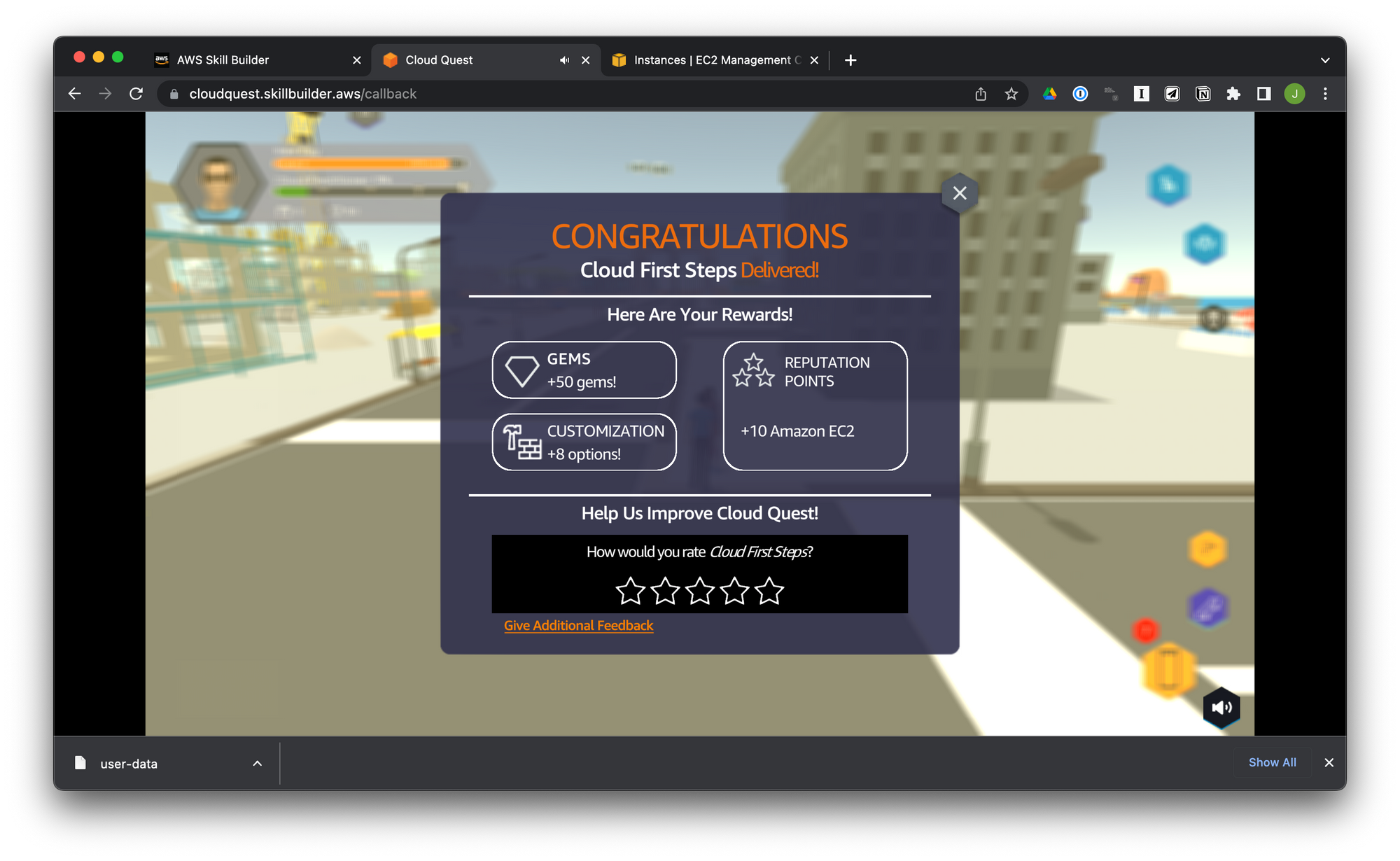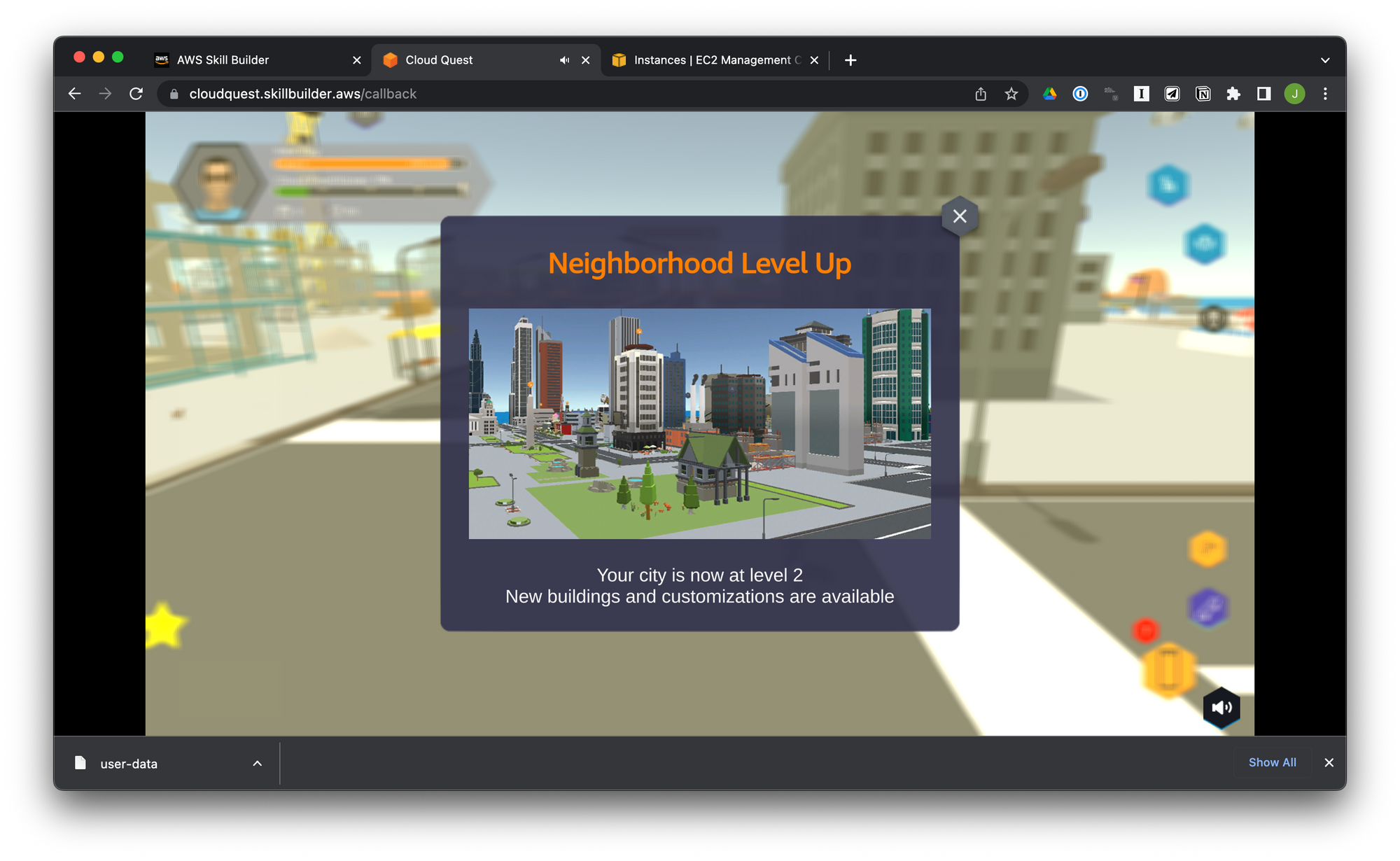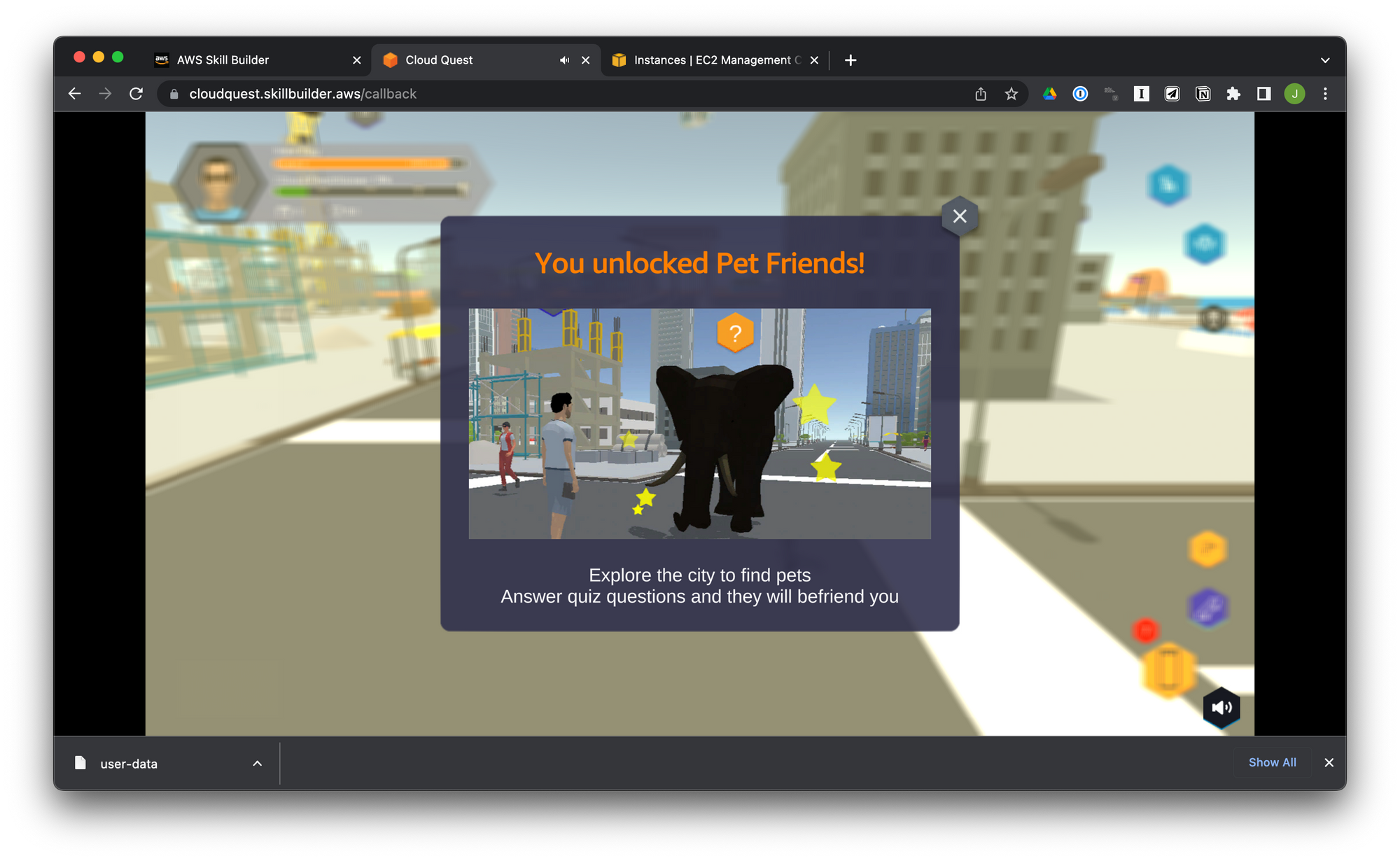Gamification for Developing Skills

I recently read Gamify: how gamification motivates people to do extraordinary things by Brian Burke. I was intrigued by the idea that you could use game mechanics to motivate people to achieve their goals. Ironically, just as I was finishing the book, I got an email notice about a new course being offered by AWS Skill Builder named AWS Cloud Quest: Cloud Practitioner. The course uses gamification techniques to walk users through the process of earning a Cloud Practitioner badge. Given all that I had just read in Burke’s book, I decided to sign up for the course and see if gamification was all that it was made it out to be.
Where did Gamification come from?
According to Burke’s book, the term was first used by British consultant Nick Pelling in 2002:
…it was created as a “deliberately ugly word” to describe “applying gamelike accelerated user interface design to make electronic transactions both enjoyable and fast.”⁴ In Pelling’s view, gamification was all about hardware, and he created the term to describe the services of a start-up consultancy named Conundra Ltd.
The term refers to taking techniques normally used in games and applying them to other processes with the intent to engage users and encourage them to achieve some goal.
Games vs Gamification
It’s important to emphasize here the difference between games and gamification:
Games primarily engage players on a whimsical level to entertain them. Gamification engages players on an emotional level to motivate them.
The focus of a gamified solution is on the player, not the organization. Before attempting to roll out a gamification project, the organization should clearly understand the player’s needs and design the game around those needs.
Gamification uses primarily intrinsic rather than extrinsic rewards. […]the distinction between intrinsic and extrinsic rewards is one of the ways we can distinguish gamification from rewards programs. Intrinsic rewards sustain engagement because they engage people at an emotional level. Extrinsic rewards can certainly be used to motivate people, but the motivation occurs at a transactional level.
We need to shift our focus to emotional engagement if we want to truly motivate people.
One size does not fit all
It’s also important to note that gamification does not fit every scenario. For example, you can’t try to make a game out of filling out expense reports just so you can get another department to handle that part of your job. Another challenge is that organizations should not force a gamified solution on its employees:
Gamification solutions are most likely to be successful when players opt in to use the system. Regardless of the quality of the gamified solution, it’s unlikely to have the voluntary participation of 100 percent of the target audience. Some people are simply not going to engage. Opt-in participation is particularly challenging in employee-facing solutions where participation is sometimes imposed by managerial decree rather than by employee choice. The types of solutions most often affected include training, change management, and performance management solutions where employee participation is sometimes mandatory.
So what’s it like to take game course?
If you don’t already have an Amazon account, you can create one just to access AWS Skill Builder. Once you’re in, you can sign up for the AWS Cloud Quest course for free.

You then create your avatar and you start to “play” the game. Do note that whatever name you choose has to be unique. It might take a while to find a name that has not already been picked by one of the seemingly thousands of people who have already signed up for the course.

Similar to other role playing video games, you progress by interacting with other characters in the game. You are helping build a city and the other characters request your assistance in resolving some issue they are having with their business. Of course, each solution is resolved using some sort of AWS resource. Each time you resolve someone’s problem, you earn rewards.

Along with your rewards, you get to chose what buildings you want for the neighborhood. You’ll be amazed at how fast you can pick your own high-rise apartment building, complete with helipad.

One odd feature is the ability to make Pet Friends. You get quizzed on some AWS feature and, if you answer correctly, they become your friends. Not a bad thing, just something I haven’t seen before.

I didn’t really take time to explore the entire virtual city but it looks like someone really took the time to add lots of features in the game. I was able to finish all the exercises and earn my badge over the course of a few days. The badge is granted by Credly and I imagine that other educational entities will start to use central credential services like this over time.
So is it better than a video or a book?
I like to learn a lot which means I watch lots of instructional videos and I work through lots of examples in books. Compared to those other methods, working through a game does have its advantages. For example, if I’m watching a video tutorial I will most likely have to pause or rewind the video if there’s something I miss. In a game, the exercise is built right into the game so I don’t have to exit the game to work the exercise. Also, videos can sometimes be dry and not very interesting. Having the visuals does make it easier to want to get back into the course after I’ve stepped away from it for a while. The built-in videos provide lots of good explanations of each feature and they are short enough so they don’t get boring. The one thing I did find annoying after a while is the background music. Working through the exercises can take a while and listening to that music loop got old. Still, it’s not enough to discourage me from taking another course like this.
Conclusion
Gamified courses can be a powerful method for picking up a new skill. Especially if you’ve been putting off taking a course because you find the material dull or dry. Will it replace videos or books any time soon? Probably not. Again, gamification does not fit every scenario; especially since it works best if they players are allowed to opt-in to playing the game. Having said that, if an organization can find a way to align its needs with its user’s needs, gamification might just be the solution they are looking for.